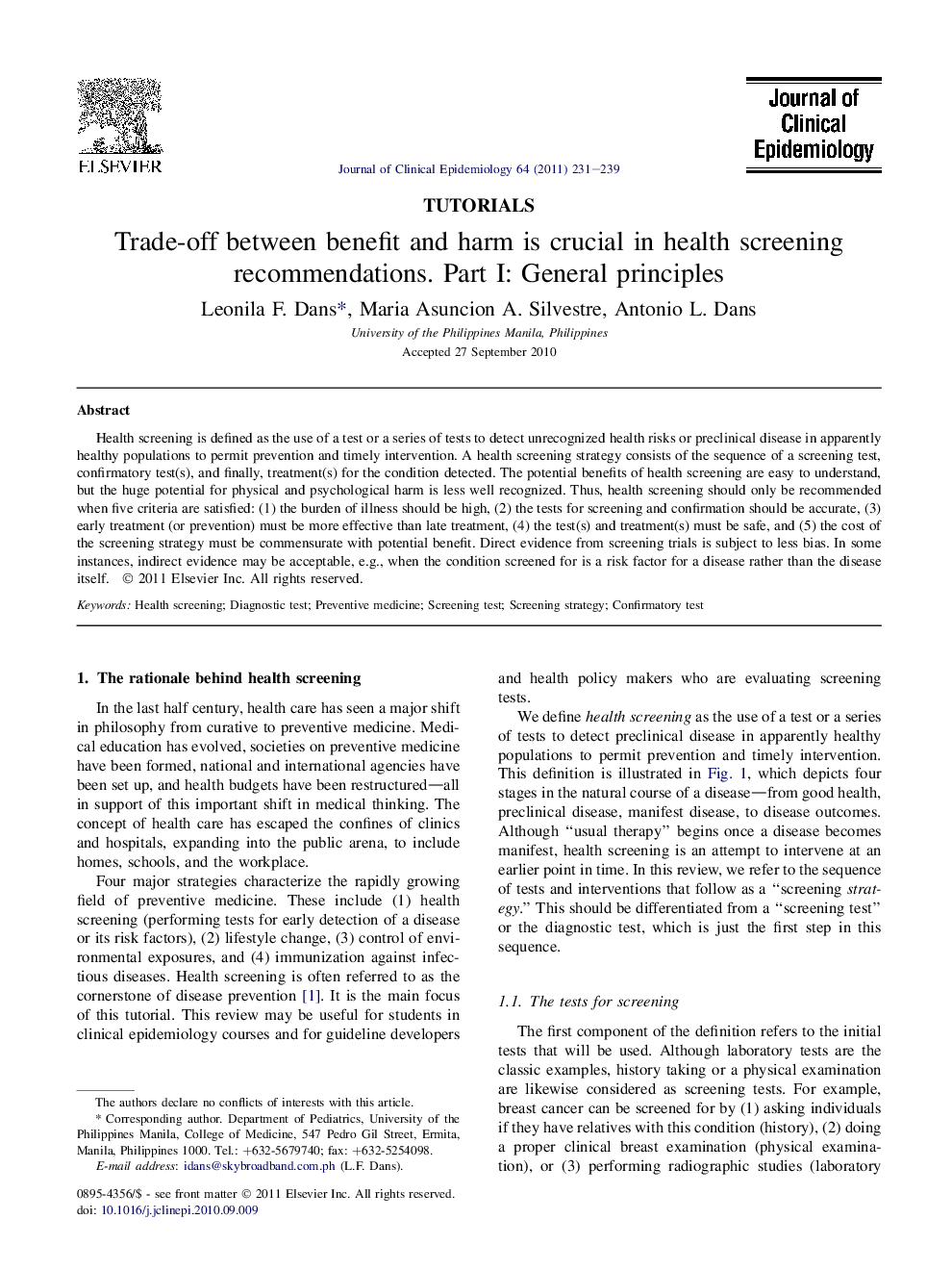| کد مقاله | کد نشریه | سال انتشار | مقاله انگلیسی | نسخه تمام متن |
|---|---|---|---|---|
| 1082417 | 950942 | 2011 | 9 صفحه PDF | دانلود رایگان |
Health screening is defined as the use of a test or a series of tests to detect unrecognized health risks or preclinical disease in apparently healthy populations to permit prevention and timely intervention. A health screening strategy consists of the sequence of a screening test, confirmatory test(s), and finally, treatment(s) for the condition detected. The potential benefits of health screening are easy to understand, but the huge potential for physical and psychological harm is less well recognized. Thus, health screening should only be recommended when five criteria are satisfied: (1) the burden of illness should be high, (2) the tests for screening and confirmation should be accurate, (3) early treatment (or prevention) must be more effective than late treatment, (4) the test(s) and treatment(s) must be safe, and (5) the cost of the screening strategy must be commensurate with potential benefit. Direct evidence from screening trials is subject to less bias. In some instances, indirect evidence may be acceptable, e.g., when the condition screened for is a risk factor for a disease rather than the disease itself.
Journal: Journal of Clinical Epidemiology - Volume 64, Issue 3, March 2011, Pages 231–239
